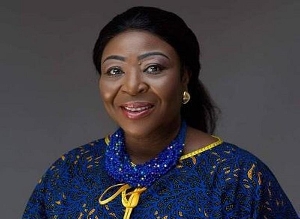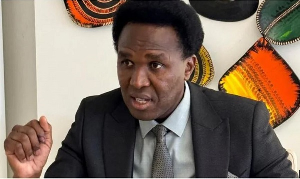The Bank of Ghana financed 70 percent of the government's GH¢4.8billion budget deficit in the first half of the year, continuing a trend of excessive lending to the government which analysts warn could harm the economy.
The level of financing appears immoderate when compared to recent years, as B&FT's analysis of deficit- financing sources since 2008 showed no time when the level of central bank lending to government was more than 60% of the first-half budget deficit.
Just one year ago - the first half of 2013 - the BoG financed 38 percent of the deficit, and in the same period of 2012 financing was 54 percent of the gap.
But in the first quarter of 2014, virtually all of the deficit was central-bank financed, prompting Fitch ratings - the agency that downgraded Ghana's creditworthiness in October - to warn that the Bank of Ghana's increased lending to government will worsen the economic situation.
Fitch said “printing money to finance the deficit will aggravate already high inflation and contribute to further cedi weakness.” The country's currency has seen its steepest fall to the dollar in 14 years, depreciating by almost 30 percent since the beginning of this year.
The central bank, in a rejoinder to Fitch, said the cause of its high lending to government is seasonality in revenue flows, “such that usually in the first and second quarters, government receipts fall short of expenditures, as happened in the first quarter of this year.
However, the data show that current financing is above historic levels, and analysts have said "is not normal and a cause for worry". They say too much central bank lending to government throws out more cedis into circulation, fuelling inflation and currency weakness.
The cause of the high central bank financing, according to the data, is weak lending to government by commercial banks and the non-bank community including the public.
In terms of the size of the deficit, it stood at 4.2 percent of GDP in the first half compared to 3.9 percent in the same period of 2013. The government's target was 4.1 percent of GDP, but lower- than-expected revenues and grants put pressure on the projection.
In July the government lifted its target for the full-year deficit by three percentage points to 8.8 percent of GDP, after voting more money for subsidies and workers' salaries.
Taming the putsized deficit, stabilising the currency and rebuilding foreign exchange reserves are top on the list of critical challenges confronting government and the central bank.
For now, the difficulty of implementing workable solutions has occasioned a request to the International Monetary Fund (IMF) for assistance. An IMF team is expected in the country this month to begin talks on a fiscal stabilisation programme for Ghana. However, the Fund has already given an inkling of the measures it would require from government.
In its May country report, it proposed a “menu of additional short-term adjustment measures” to reduce the budget deficit - which has been in double digits for two consecutive years - more quickly.
The Fund called for higher taxes and spending cuts to slash the deficit to 8.5 percent of GDP in 2014, 6.3 percent in 2015, and a more sustainable 4.5 percent of GDP by 2016.
Click to view details



Business News of Monday, 1 September 2014
Source: B&FT

















